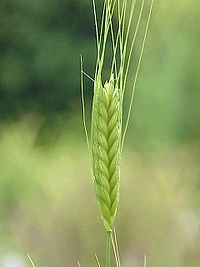
Photo from wikipedia
Objective To identify neuronal surface antibodies in opsoclonus myoclonus ataxia syndrome (OMAS) using contemporary antigen discovery methodology. Methods OMAS patient serum immunoglobulin G immunohistochemistry using age-equivalent rat cerebellar tissue was… Click to show full abstract
Objective To identify neuronal surface antibodies in opsoclonus myoclonus ataxia syndrome (OMAS) using contemporary antigen discovery methodology. Methods OMAS patient serum immunoglobulin G immunohistochemistry using age-equivalent rat cerebellar tissue was followed by immunoprecipitation, gel electrophoresis, and mass spectrometry. Data are available via ProteomeXchange (identifier PXD009578). This generated a list of potential neuronal surface cerebellar autoantigens. Live cell-based assays were used to confirm membrane-surface antigens and adsorb antigen-specific immunoglobulin Gs. The serologic results were compared to the clinical data. Results Four of the 6 OMAS sera tested bound rat cerebellar sections. Two of these sera with similar immunoreactivities were used in immunoprecipitation experiments using cerebellum from postnatal rat pups (P18). Mass spectrometry identified 12 cell-surface proteins, of which glutamate receptor δ2 (GluD2), a predominately cerebellar-expressed protein, was found at a 3-fold-higher concentration than the other 11 proteins. Antibodies to GluD2 were identified in 14/16 (87%) OMAS samples, compared with 5/139 (5%) pediatric and 1/38 (2.6%) adult serum controls (p < 0.0001), and in 2/4 sera from patients with neuroblastoma without neurologic features. Adsorption of positive OMAS sera against GluD2-transfected cells substantially reduced but did not eliminate reactivity toward cerebellar sections. Conclusion Autoantibodies to GluD2 are common in patients with OMAS, bind to surface determinants, and are potentially pathogenic.
Journal Title: Neurology
Year Published: 2018
Link to full text (if available)
Share on Social Media: Sign Up to like & get
recommendations!